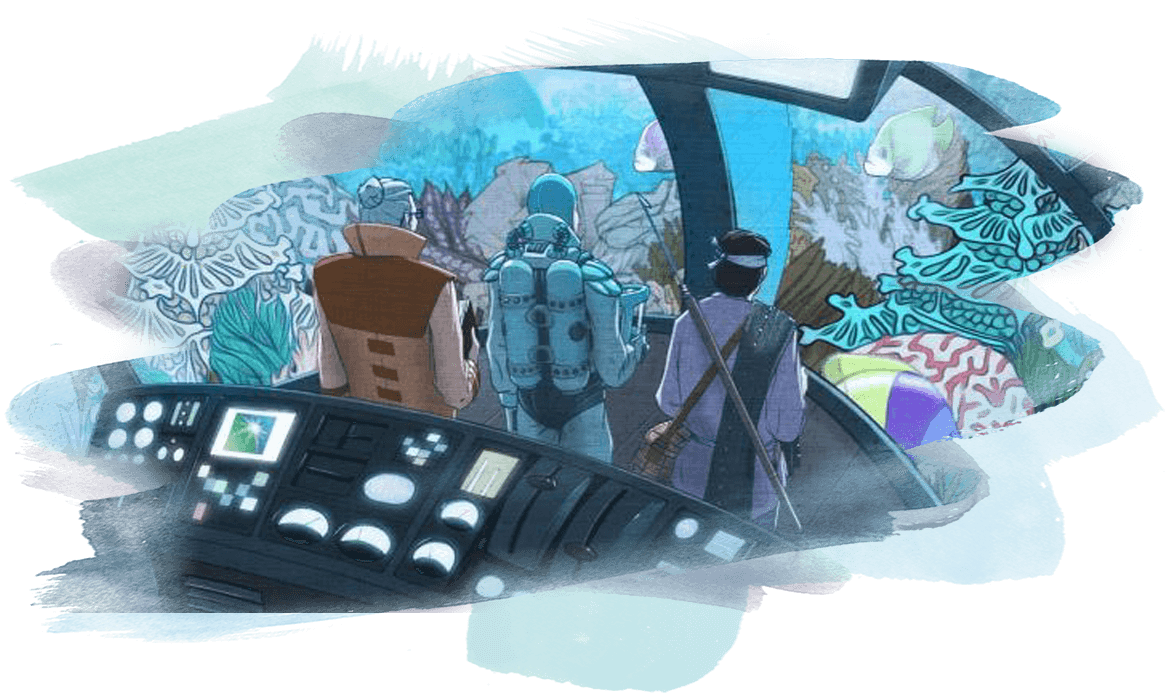Real stories inspire — Bringing Okinawa’s unique coral reef back from the brink
How a marine scientist, a scuba diver, and a fisherman from the Okinawa Prefecture of Japan, combined their knowledge and skills to help save a special and ‘secret’ coral reef.
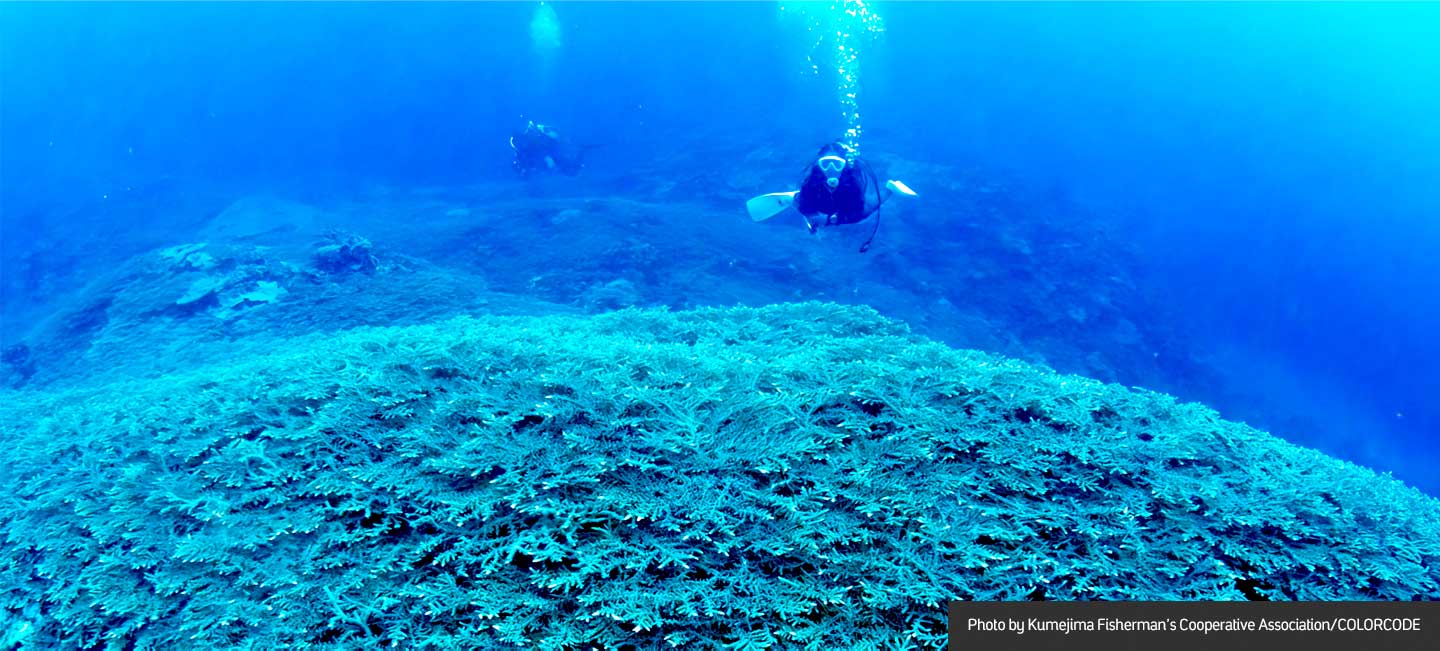
- Coral reefs have an important role to play in the environment and for local communities
- Three men combined their efforts, supported by funding from Aramco, to raise awareness of a special deep-water coral reef which was almost destroyed by typhoon Muifa in 2011
- Thanks to their initiative and Aramco’s support, there has been a substantial increase in interest across Japan in the marine life of Okinawa

Coral reefs play an important role in protecting biodiversity, and in sustaining the environment and the livelihoods of local people. Though hidden beneath the waves, they protect coastlines from both erosion and storms. And they provide jobs for local communities — for whom they are also a rich source of food and medicines.
Kumejima, an island in Okinawa Prefecture, Japan, is known for its tropical climate and sweeping beaches, and for being home to many coral reefs. These large communities of coral reefs sustain and nurture the diverse marine life that makes its home in this region of the Pacific Ocean.
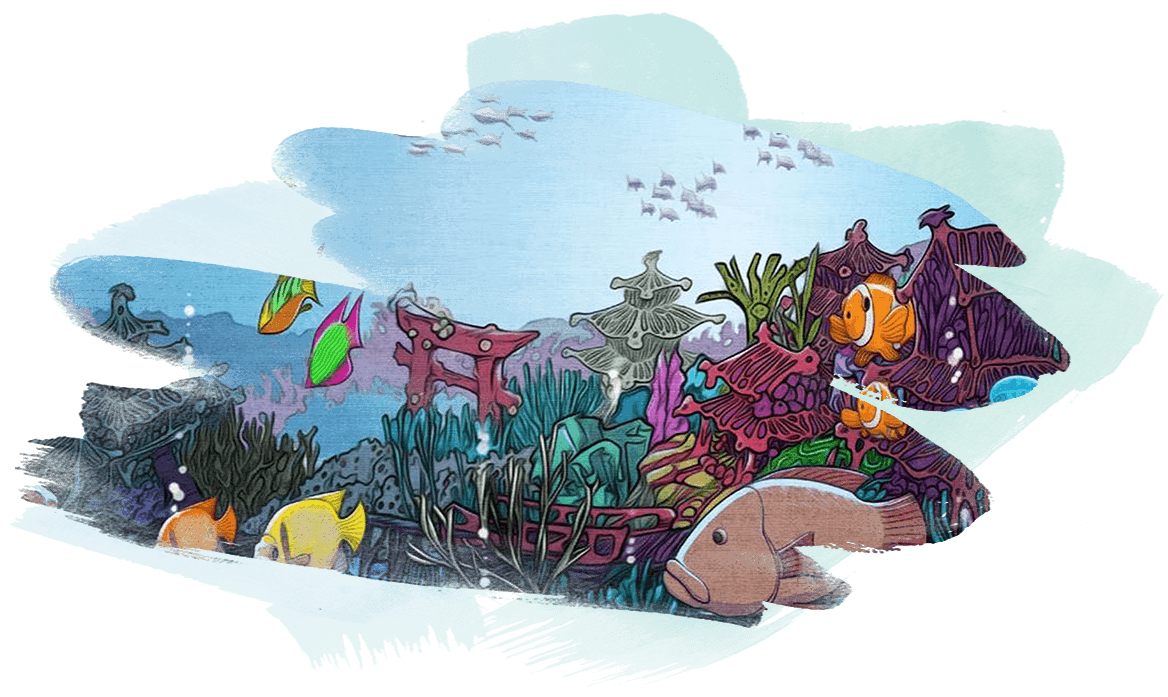
Illustration from the Tabata-san, Fujita-san, and Shiori-san story - Okinawa’s magnificent coral reef

The Okinawa Prefecture experiences an average of eight typhoons each year which, when they hit, frequently damage marine environments. In 2011, typhoon Muifa struck Kumejima and left a devastating impact on not only the land and marine habitats, but also the structure of these precious coral reefs.
Through a powerful initiative led by three men, and supported by Aramco, one particularly unique reef received the support and protection it needed to recover from this devastating impact, and expanded the world’s understanding of these beautiful and vitally important natural resources.


Hidden away beneath the waves, much deeper than coral was thought to exist, this huge reef had been a secret known only to residents of Kumejima.
This changed when professional scuba diver, and new resident, Atsuo Shioiri, was taken to this special spot by a local fisherman.
“It was beyond my imagination — something I’d only envisioned in my dreams was spread out in front of me,”says Shioiri. Realizing just how special this expansive reef was, Shioiri reached out to an expert, Professor Yoshihisa Fujita, at Okinawa’s Prefectural University of Arts.
Possessing differing backgrounds, these three men — fisherman Yuji Tabata, researcher Fujita, and guiding diver Shioiri — joined together in 2010 to organize the study and monitoring of the reef, and to raise the Japanese public’s awareness of the importance of protecting it, and the many other coral reefs in their nation’s waters.
Professor Fujita, with the help of Tabata and Shioiri, produced a report in 2011 that spread knowledge of this unique reef in the scientific world, and in society as a whole.
“It was beyond my imagination - something I’d only envisioned in my dreams was spread out in front of me.”
Atsuo Shiori, Diver
According to the Study Group, the species of this coral reef community was Yasemidoriishi (Acropora horrida), which the IUCN (International Union for Conservation of Nature) classifies as “Vulnerable,” or at high risk of extinction, on its list of threatened species (Red List). What’s more, at about 200 meters wide and 1,200 meters long, it was also one of the largest-scale, single-species coral communities in all of Japan. It was also located at depths of 30 to 40 meters, making it difficult to reach with normal scuba diving.
“It was a new academic discovery, even though the local fishermen and divers had known about it for a long period of time,” says Fujita.
But then, just the following year, typhoon Muifa arrived, and this important ‘new find’ was almost destroyed. When it was over, approximately 70% of the area the reef had once covered was now just empty ocean floor. The efforts of the three men seemed to have come to nothing.
But they were all passionate about the project, and the marine environment, so they persisted and continued to work together, watching over what little coral still remained.

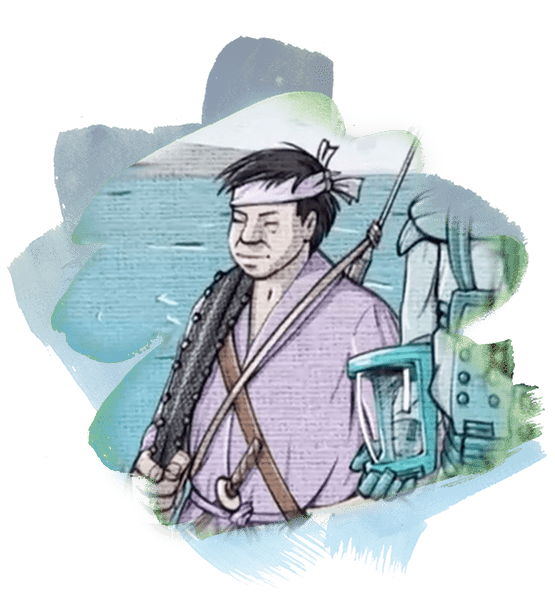
Yuji Tabata fishes and farms seaweed in Kumejima’s waters. He comes from a family of fishermen and is the current head of the fishermen’s union on the island. His earliest memory of fishing was when he was nine, diving from the boat as his family members manned the nets. “It was like flying in the sky and looking over the mountains from above,” Tabata recalls.
He has a deep knowledge of the ocean, and is determined to make the sea a better and cleaner place for the generations to come.
For Shioiri, a diving instructor, guide, and underwater photographer, born in distant mountains, the determination to save the damaged coral reef came from his love for the undersea world, ignited by childhood holidays to the coast with his family. When he was first introduced to this reef by his friend Tabata, it was an experience he describes as mesmerizing.
“This giant space, the reef expanded with light. I’d never seen anything like it and I’ve dived in many seas around the world. It was beyond my imagination.”
He’d discovered a new favorite spot to explore, one he wasn’t willing to give up on.
“My goal in joining this project was to deliver the sea to my children and grandchildren in a better condition than the one it was in.”
Yuji Tabata, Fisherman


Marine scientist, Professor Fujita, had always viewed the sea as a source of wonder and curiosity. In 2005 he’d established the Marine Learning Center (MLC) in Okinawa, an institution dedicated to exploring the undersea environment in the waters around Okinawa, and to educating people in society about its habitats and residents.
“The purpose of this organization is to promote a connection, a bond between researchers and society,” says Fujita.
Fujita firmly believed that spreading knowledge about the sea and protecting coral reefs could never be made possible through the actions of researchers alone — he strongly supported collaborations with the local fishermen and divers of Okinawa and the nearby islands.
“When we ‘discovered’ the reef, it became big news across Japan. People paid attention and the islanders were also very excited with the expectation that they could use this resource in many ways.
“When the coral reef was almost destroyed by the typhoon, the people on the island were disappointed and had given up. They thought it was now gone,” Fujita recalls. “But I wanted to tell them, no — we need to observe more, it could revive itself.
“Tabata-san and Shioiri-san and some other fishermen agreed with me and said they would join me. It was a big obstacle to overcome to convince them and move ahead to continue watching what we believed had been destroyed. And to work out how could we keep funding this effort to keep watching what was believed to have been destroyed. To do this, I established the Nanhanari Coral Reef Study Group, a voluntary association composed of the divers and fishermen of Kumejima. Once everyone was convinced they all joined together and cooperated.”
“Without Shioiri’s diving skills, we wouldn’t have such an excellent view underwater, and without Tabata’s deep knowledge, we wouldn’t know so much about the ocean. Researchers alone could not deliver this initiative.”
Professor Yoshihisa Fujita, Marine scientist

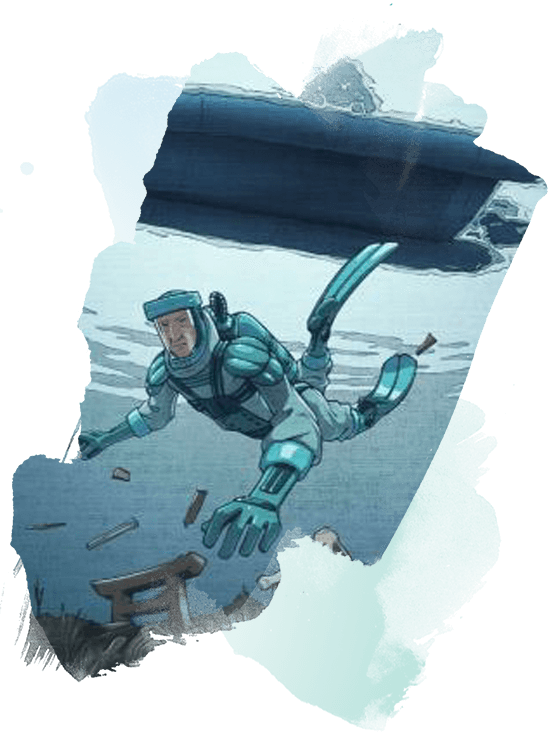
Coral reefs have the capacity to regenerate themselves, but in shallow seas they experience huge impacts from human activities such as fishing and tourism, so while some do recover, many — because of this damaging activity — don’t. And this reef was far from a normal case.
“At the depth of this coral community we have no research about regeneration after devastation at this scale. This is the first scientific discovery of this happening against this backdrop. And before this we did not even know that typhoons could cause damage at that depth in the ocean,” says Fujita.
But the professor’s optimism would pay off. The team continued their monitoring, and the project even grew as more fishermen and divers joined the effort. And those who took part were delighted to see and record how, over time, the reef gradually, bit-by-bit, began to return to its former glory.
It was the first case in Japan of tracking typhoon damage to a middle-depth coral reef community and its process of restoration. The survey was also very valuable for confirming that in 2013, two years after the catastrophic destruction, the reef was showing amazing restoration.
Above all, the survey was highly praised as a rare case example of an initiative where local residents without research backgrounds were involved, and the survey methods were passed on so they could continue it themselves.

To support the valuable work of these men, Aramco Asia Japan, through Okinawa Coral Reef Conservation Consortium, awarded the Marine Learning Center (MLC) the Aramco Okinawa Coral Reef Conservation Fund Grant a total of five times — in 2012, 2013, 2014, 2019 and 2020.
The funding was disbursed to the MLC after the 2011 typhoon in recognition of its achievements in the field of marine environment research, and in the promotion of marine science education.
The fund was used to monitor the healing of the coral reef and to help make it widely known to the local community. It made it possible to offer educational classes to children, and to organize an exhibit in a local museum about coral reefs and their importance.
Professor Fujita believes that in order to protect this and the other coral reefs off Kumejima, researchers need to get to know it better and share their knowledge with the wider academic community. And for this to be possible, it requires more collaborations like the one between himself, Tabata, and Shioiri.
“Research alone cannot protect the reefs,” says Fujita, “We need to keep watching this reef with help from the divers and the fishermen living on this island.”
Thanks to their combined efforts, which Aramco Asia Japan has helped to push forward, there has been unprecedented interest across Japan in the marine life of Okinawa.
The future of this special Kumejima coral reef is now far more stable, and with the determination and resilience of the three friends, and with Aramco Asia Japan’s support, it looks like that will long continue.
In Japan, Aramco has been working to promote conservation of the coral reefs around Okinawa since 2011.
Aramco Continues Support for the Okinawa Coral Reef Conservation Council | Aramco Asia Japan
ELEMENTS
